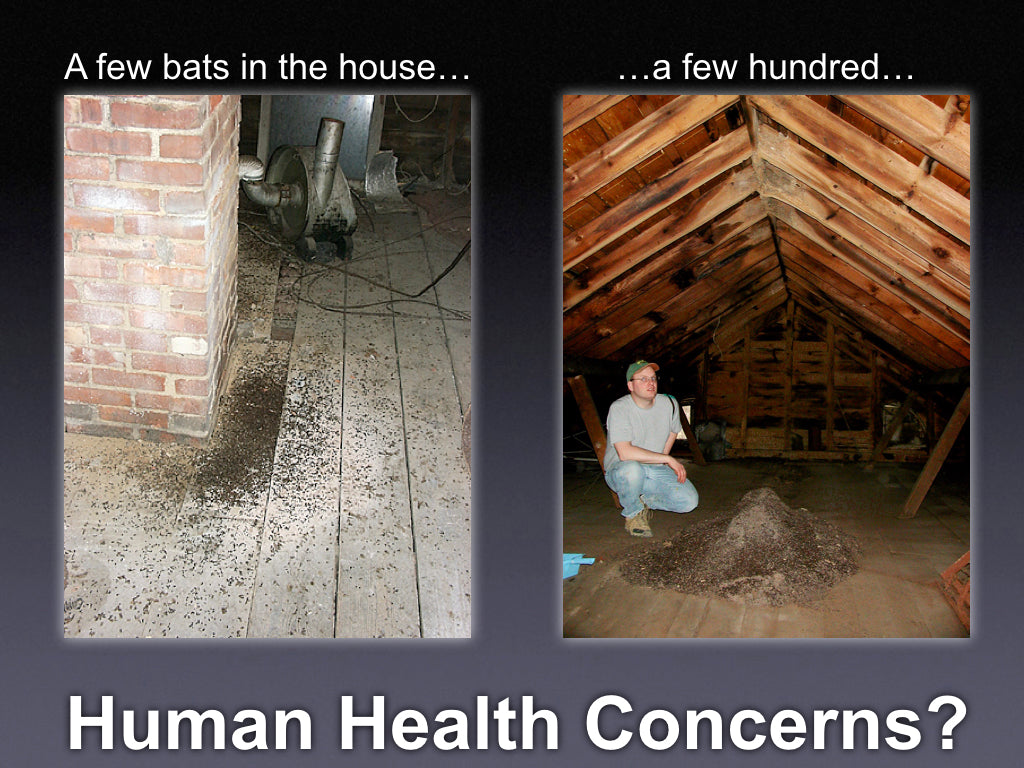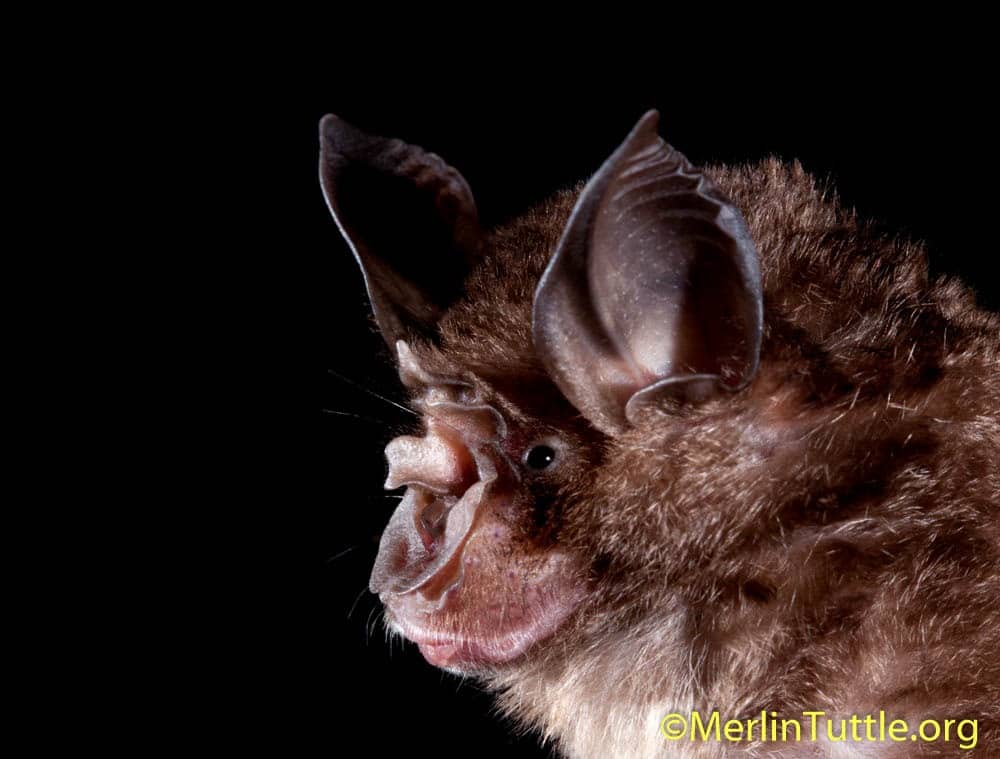Human Health Concerns and Bats

Rabies and bats
Rabies is the most important public health hazard associated with bats, but its impact has been vastly exaggerated. The first State to report rabies in a bat was Florida in 1953. By 1978, rabies had been reported in 30 of the 40 bat species normally found in the United States and in all 48 contiguous United States, but no increase in the rate of infection has been detected. In 26 years, there have been only eight human fatalities in the United States and Canada attributed to actual bites of rabid bats and two human deaths probably due to nonbite aerosol transmission. Far more people die every year from dog attacks, bee stings, power mower accidents, or even from being struck by lightning. Unfortunately, newspaper reports and television coverage of bat bites are often sensational, exaggerated and grossly inaccurate, perpetuating misleading information. The Washington Post, 20 September 1979 carried this headline "WARNING: SICK BIRD MAY BE RABID BAT: 12 Million of the Winged Mammals to Pass Through Md. on Way South." On 17 August 1980, the Washington Post headlined a news item "Thousands of Bats, Some Rabid, Infest Hagerstown Homes." Such misleading accounts usually elicit intense public reactions that generate vociferous demands for complete bat destruction. In addition, the following sequence of events usually occurs: application of some chemical (DDT or anticoagulant) to kill the bats which results in increased numbers of grounded bats, increasing the probability of human contact and anti-rabies treatment. If a dog or cat is involved, the pet may have to be either quarantined or destroyed.
Aerosol rabies transmission has been shown to be a hazard to humans and other mammals. It is not a public health hazard with house bats. The two probable airborne rabies cases were acquired in one cave in Texas occupied by millions of Mexican free-tailed bats. To demonstrate that airborne rabies occurred, foxes and coyotes died of rabies within the cave even though they had been placed in screened cages to protect them from bat bites. Although rate of infection among the bats was low the exceptional environmental conditions in the cave were conducive to aerosol transmission of rabies. Such transmission likely occurs in only a very few caves, none in the northeastern United States.
Any bite from a wild animal should always be considered a potential for rabies exposure. Immediate and thorough washing of all bite wounds and scratches with soap and water is probably the most effective measure for preventing rabies. If a bat has bitten a person or pet, it should be captured, without destroying the head, and placed in a cloth or plastic bag. Dead bats should be shipped under refrigeration to the nearest health laboratory for examination.
Prevention of exposure to rabies
Most rabies exposures could be avoided if people simply refrained from handling animals, whether it be a bat, cat, or raccoon. Because there have been a few confirmed bat-transmitted rabies deaths in humans, bitten persons are routinely treated to prevent rabies. Treatment is discontinued only if the bat can be shown to be rabies free. Pets that have been bitten and not received antirabies vaccination are either quarantined or destroyed. Unprovoked bat attacks on humans are extremely rare, despite exaggerated stories which become passed around. Bites usually are defensive, occurring when people handle sick or moribund bats. Effective ways to minimize potential human-bat contact are (1) cautioning the general public not to handle wildlife and (2) exercising care in handling suspected sick wildlife. Inexperienced people should never touch any wild animal with bare hands. Bats can be picked up with gloves, forceps, or a stick.
Histoplasmosis and bats
Histoplasmosis is an airborne disease caused by a microscopic soil fungus, Histoplasma capsulatum, that affects the lungs of humans. It can masquerade as influenza, or with more severe symptoms, be misdiagnosed as tuberculosis. X-rays may show pulmonary lesions. The disease does not respond to tuberculosis treatment. Many infections in humans do not produce symptoms or cause distress. Skin and blood tests reveal the presence of an infection; however, a positive histoplasmin reaction may only be evidence of a previous infection. When soil containing the fungus is disturbed, the spores, and possibly hyphal fragments, become airborne and may be inhaled by people who enter bat roosts.
Prevention and protection
Fortunately, attics that have harbored bats for many years and contain sizable accumulations of guano are not generally located where human occupants are easily exposed. Relatively few people, even among those actually exposed, become seriously ill. However, there is small potential risk of infection to anyone intending to remove the guano, due to spores released by the disturbance. Pest control operators and others proposing to undertake these tasks on a regular basis should be healthy persons with positive histoplasmin skin tests and clear chest x-rays. Some protection is possible by wearing respirators that fit properly and are capable of filtering out particles as small as 2µ in diameter or by using a self-contained breathing apparatus. The respirators should be approved for nuisance dusts by the National Institute for Occupational Safety and Health. Dry guano should be dampened with water before its removal to further reduce the hazard of dust inhalation.
Guano, urine, odor, and ectoparasites
Bat guano and urine accumulating in attics and wall spaces attract arthropods such as roaches and mites. The accompanying odor can be pungent but not dangerous. Bat ectoparasites, such as ticks, mites, fleas, and bugs, rarely attack humans. They are most likely to cause a nuisance after a house has been batproofed, thereby ridding the edifice of bats but leaving arthropods. Arthropod problems are unlikely except in very large, well-established bat colonies where fumigation may be appropriate. Ectoparasites quickly die in the absence of bats
- John Chenger




